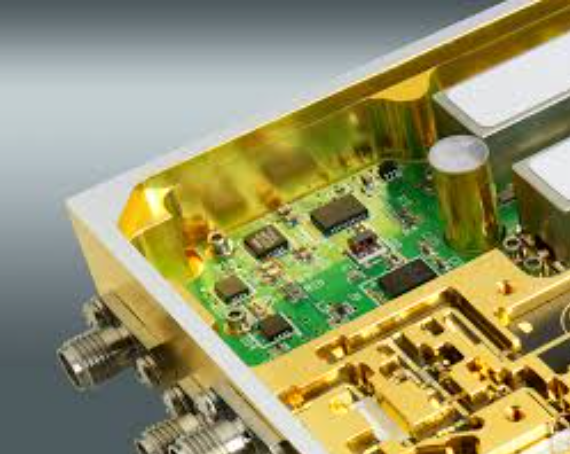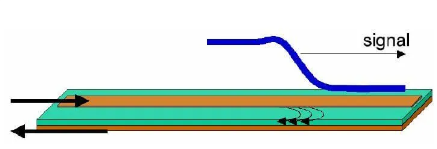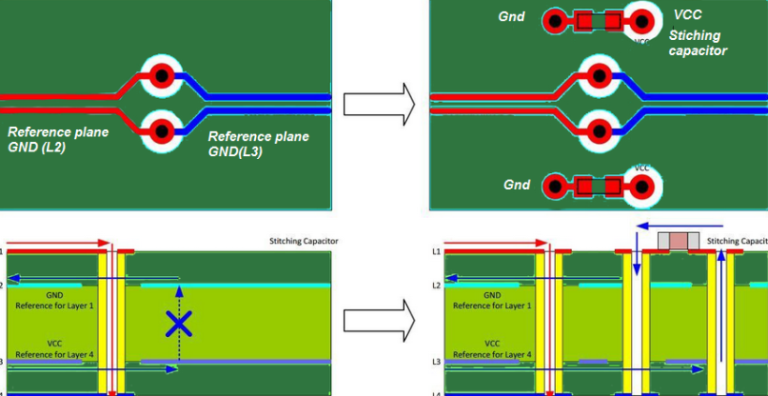What chemicals are used in pcb manufacturing
Common Chemicals Used In PCB Manufacturing
Printed Circuit Boards (PCBs) are the backbone of modern electronic devices, serving as the foundation upon which electronic components are mounted and interconnected. The manufacturing of PCBs involves a series of intricate processes, each requiring specific chemicals to achieve the desired results. Understanding the common chemicals used in PCB manufacturing is essential for appreciating the complexity and precision involved in creating these critical components.
To begin with, one of the primary chemicals used in PCB manufacturing is copper.
Copper is essential for creating the conductive pathways on the board. The process starts with a copper-clad laminate, which is a substrate material coated with a thin layer of copper. This copper layer is then etched away using a chemical etchant, typically ferric chloride or ammonium persulfate, to form the desired circuit patterns. These etchants are highly effective in dissolving the unwanted copper, leaving behind the intricate network of conductive traces.
Following the etching process, the next critical step involves the application of a photoresist.
Photoresists are light-sensitive chemicals that are used to transfer the circuit design onto the copper-clad laminate. There are two main types of photoresists: positive and negative. Positive photoresists become soluble when exposed to light, allowing the exposed areas to be washed away, while negative photoresists become insoluble, protecting the underlying copper. Common chemicals used in photoresists include diazonaphthoquinone for positive resists and bisazide for negative resists.
After the photoresist application, the PCB undergoes a process called electroplating.
Electroplating involves depositing a thin layer of metal, usually copper, onto the exposed areas of the board to enhance conductivity and durability. The electroplating solution typically contains copper sulfate, sulfuric acid, and a variety of additives to ensure uniform deposition and adhesion. This step is crucial for creating reliable electrical connections and ensuring the longevity of the PCB.
In addition to copper, other metals such as tin, lead, and gold are also used in PCB manufacturing.
Tin-lead solder, for instance, is commonly used for creating solder joints that connect electronic components to the board. However, due to environmental and health concerns, lead-free alternatives such as tin-silver-copper alloys are increasingly being adopted. Gold, on the other hand, is often used for plating connector pads and edge connectors due to its excellent conductivity and resistance to oxidation.
Another important chemical used in PCB manufacturing is the flux.
Flux is a cleaning agent that removes oxidation and contaminants from the metal surfaces before soldering. It ensures a strong bond between the solder and the metal surfaces, preventing defects such as cold joints and bridging. Common fluxes include rosin-based fluxes, which are derived from pine tree resin, and water-soluble fluxes, which can be easily cleaned with water after soldering.
Finally, the PCB manufacturing process also involves the use of various cleaning agents and solvents.
These chemicals are used to remove residues, contaminants, and excess materials from the board at different stages of production. Isopropyl alcohol, acetone, and deionized water are some of the commonly used cleaning agents that ensure the PCB is free from impurities and ready for the next stage of assembly.
In conclusion, the manufacturing of PCBs relies on a diverse array of chemicals, each playing a crucial role in different stages of the process. From etching and electroplating to soldering and cleaning, these chemicals ensure the precision, reliability, and performance of the final product. Understanding the common chemicals used in PCB manufacturing not only highlights the complexity of the process but also underscores the importance of careful handling and disposal to minimize environmental impact.

The Role Of Etching Chemicals In PCB Production
Printed Circuit Boards (PCBs) are the backbone of modern electronic devices, serving as the platform upon which electronic components are mounted and interconnected. The manufacturing process of PCBs involves several intricate steps, one of the most critical being the etching process. Etching is essential for defining the circuit patterns on the board, and it relies heavily on specific chemicals to achieve precision and efficiency. Understanding the role of etching chemicals in PCB production is crucial for appreciating the complexity and sophistication of modern electronics manufacturing.
To begin with, the etching process in PCB production typically involves the removal of unwanted copper from a laminated board to create the desired circuit patterns.
This is achieved through the use of etching chemicals, which selectively dissolve the exposed copper while leaving the protected areas intact. The most commonly used etching chemicals in PCB manufacturing are ferric chloride, ammonium persulfate, and cupric chloride. Each of these chemicals has unique properties that make them suitable for different etching requirements.
Ferric chloride is one of the most widely used etching agents in PCB production.
It is favored for its effectiveness in dissolving copper and its relatively low cost. Ferric chloride works by oxidizing the copper, converting it into copper chloride, which is then washed away. This chemical is particularly useful for etching fine lines and intricate patterns due to its high precision. However, it is also highly corrosive and requires careful handling and disposal to prevent environmental contamination.
Ammonium persulfate is another etching chemical commonly used in PCB manufacturing.
It is known for its ability to produce clean and sharp etchings, making it ideal for high-precision applications. Ammonium persulfate works by breaking down into free radicals that react with the copper, effectively removing it from the board. This chemical is less corrosive than ferric chloride, but it still requires proper handling and disposal to ensure safety and environmental protection.
Cupric chloride is also frequently used in the etching process, particularly for its ability to be regenerated and reused, making it a more environmentally friendly option.
Cupric chloride etching involves a redox reaction where the cupric ions oxidize the copper, forming cuprous chloride, which can then be regenerated back into cupric chloride using an oxidizing agent. This regeneration capability not only reduces waste but also lowers the overall cost of the etching process.
In addition to these primary etching chemicals, various additives and stabilizers are often used to enhance the etching process.
For instance, surfactants may be added to improve the wetting properties of the etching solution, ensuring uniform contact with the copper surface. Inhibitors can also be used to protect certain areas of the board from being etched, allowing for greater control over the final circuit pattern.
The role of etching chemicals in PCB production extends beyond merely removing unwanted copper.
These chemicals are integral to achieving the high levels of precision and reliability required in modern electronic devices. The choice of etching chemical, along with the specific conditions under which it is used, can significantly impact the quality and performance of the final PCB. Therefore, manufacturers must carefully select and manage these chemicals to ensure optimal results.
In conclusion, etching chemicals play a vital role in the production of PCBs, enabling the creation of intricate and precise circuit patterns essential for modern electronics. Ferric chloride, ammonium persulfate, and cupric chloride are among the most commonly used etching agents, each offering unique advantages and challenges. By understanding and effectively managing these chemicals, manufacturers can produce high-quality PCBs that meet the demanding standards of today’s electronic devices.

Safety Measures For Handling PCB Manufacturing Chemicals
In the realm of printed circuit board (PCB) manufacturing, the use of various chemicals is indispensable for achieving the desired electrical and mechanical properties. However, the handling of these chemicals necessitates stringent safety measures to mitigate potential hazards to human health and the environment. The chemicals employed in PCB manufacturing include etchants, solvents, developers, and plating solutions, each presenting unique risks that must be managed with care.
To begin with, etchants such as ferric chloride and ammonium persulfate are commonly used to remove unwanted copper from the PCB substrate.
These chemicals are highly corrosive and can cause severe skin burns and respiratory issues if inhaled. Therefore, it is imperative to use personal protective equipment (PPE) such as gloves, goggles, and face shields when handling these substances. Additionally, proper ventilation systems should be in place to ensure that fumes are adequately extracted from the work area, thereby reducing the risk of inhalation.
Transitioning to solvents, which are used for cleaning and degreasing PCB surfaces, substances like acetone and isopropyl alcohol are prevalent.
These solvents are flammable and can pose fire hazards if not stored and handled correctly. It is essential to store solvents in well-ventilated areas away from ignition sources and to use flame-resistant containers. Moreover, workers should be trained in the proper use of fire extinguishers and emergency procedures in case of accidental spills or fires.
Developers, such as sodium carbonate, are used in the photolithography process to develop the photoresist layer on the PCB.
These chemicals can be irritating to the skin and eyes, necessitating the use of appropriate PPE. Furthermore, it is crucial to have eyewash stations and safety showers readily accessible in areas where developers are used, ensuring that immediate first aid can be administered in case of accidental exposure.
Plating solutions, including those containing copper sulfate and nickel sulfamate, are used to deposit metal layers onto the PCB.
These solutions can be toxic and pose significant health risks if ingested or absorbed through the skin. To minimize exposure, workers should wear chemical-resistant gloves and aprons, and all handling should be conducted in designated areas equipped with spill containment measures. Additionally, regular training on the proper handling and disposal of these chemicals is essential to maintain a safe working environment.
In addition to PPE and proper storage, the implementation of engineering controls is vital for ensuring safety in PCB manufacturing.
This includes the use of fume hoods, exhaust systems, and automated dispensing equipment to minimize direct contact with hazardous chemicals. Regular maintenance and inspection of these systems are necessary to ensure their effectiveness and to prevent accidental releases.
Moreover, comprehensive safety protocols should be established, including detailed procedures for the safe handling, storage, and disposal of chemicals.
These protocols should be regularly reviewed and updated to reflect any changes in regulations or industry best practices. Workers should be thoroughly trained on these protocols and encouraged to report any safety concerns or incidents promptly.
In conclusion, while the use of chemicals in PCB manufacturing is essential for producing high-quality circuit boards, it is equally important to implement robust safety measures to protect workers and the environment. By utilizing appropriate PPE, engineering controls, and comprehensive safety protocols, the risks associated with handling these chemicals can be significantly mitigated, ensuring a safer and more sustainable manufacturing process.
Environmental Impact Of Chemicals In PCB Manufacturing
The environmental impact of chemicals used in printed circuit board (PCB) manufacturing is a subject of growing concern, given the increasing demand for electronic devices. The production of PCBs involves a variety of chemicals, each playing a crucial role in the fabrication process. However, these chemicals can have significant environmental repercussions if not managed properly. Understanding the types of chemicals used and their potential environmental effects is essential for developing more sustainable manufacturing practices.
One of the primary chemicals used in PCB manufacturing is copper, which is essential for creating the conductive pathways on the board.
Copper is typically applied through electroplating, a process that involves the use of copper sulfate and sulfuric acid. While copper itself is not highly toxic, the waste products generated during electroplating can be harmful if released into the environment. Copper ions can contaminate water sources, posing risks to aquatic life and potentially entering the human food chain.
In addition to copper, various etching agents are employed to remove unwanted copper from the PCB.
Ferric chloride and ammonium persulfate are commonly used etchants. These chemicals are highly corrosive and can cause severe environmental damage if not disposed of correctly. Ferric chloride, for instance, can lead to the acidification of water bodies, adversely affecting aquatic ecosystems. Moreover, improper disposal of these etching agents can result in soil contamination, which can have long-term ecological consequences.
Another critical group of chemicals in PCB manufacturing includes solvents and cleaning agents. Isopropyl alcohol, acetone, and other organic solvents are used to clean the boards and remove residues. These solvents are volatile organic compounds (VOCs) that can evaporate into the atmosphere, contributing to air pollution and posing health risks to workers. Additionally, the improper disposal of solvent waste can lead to groundwater contamination, further exacerbating environmental issues.
Soldering is another essential step in PCB manufacturing, involving the use of soldering fluxes and lead-based or lead-free solders.
Traditional lead-based solders contain lead, a toxic heavy metal that can cause severe environmental and health problems. Lead can leach into the soil and water, posing risks to both wildlife and humans. Although lead-free solders are now more commonly used, they often contain other metals such as tin, silver, and copper, which also have environmental implications if not managed properly.
Furthermore, the use of photoresists and developers in the photolithography process introduces additional chemicals into the manufacturing cycle.
Photoresists are light-sensitive materials that help create the desired circuit patterns on the PCB. These materials often contain hazardous substances such as bisphenol A (BPA) and other phenolic compounds. Developers, which are used to remove the unexposed photoresist, typically contain alkaline substances that can be harmful to aquatic life if discharged into water bodies.
To mitigate the environmental impact of these chemicals, it is crucial for PCB manufacturers to adopt more sustainable practices.
This includes implementing proper waste management systems, recycling and reusing materials whenever possible, and investing in cleaner technologies. Regulatory frameworks and industry standards also play a vital role in ensuring that manufacturers adhere to environmentally responsible practices.
In conclusion, while the chemicals used in PCB manufacturing are indispensable for producing high-quality electronic devices, their environmental impact cannot be overlooked. By understanding the potential risks associated with these chemicals and taking proactive measures to mitigate their effects, the industry can move towards more sustainable and environmentally friendly manufacturing processes.






